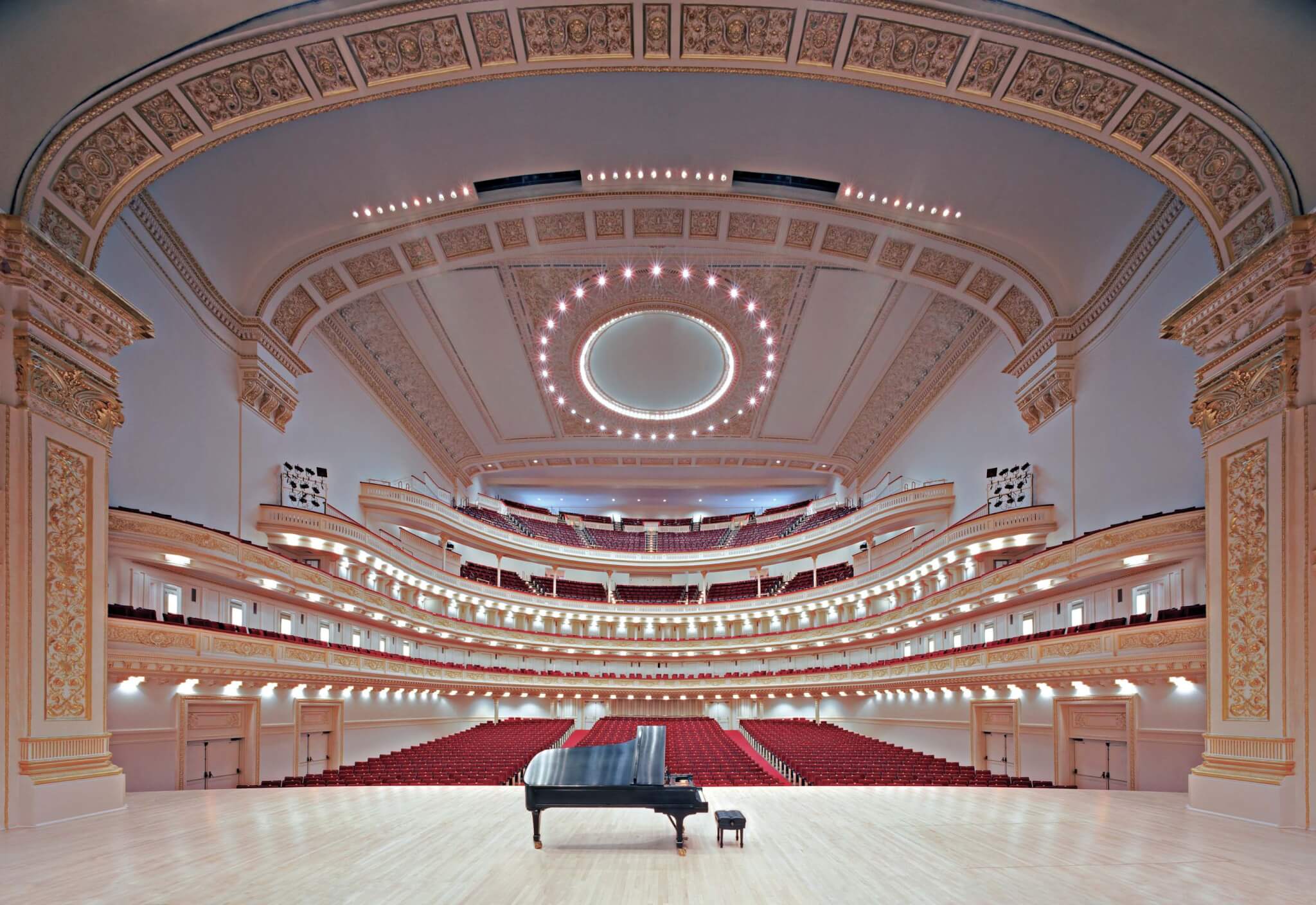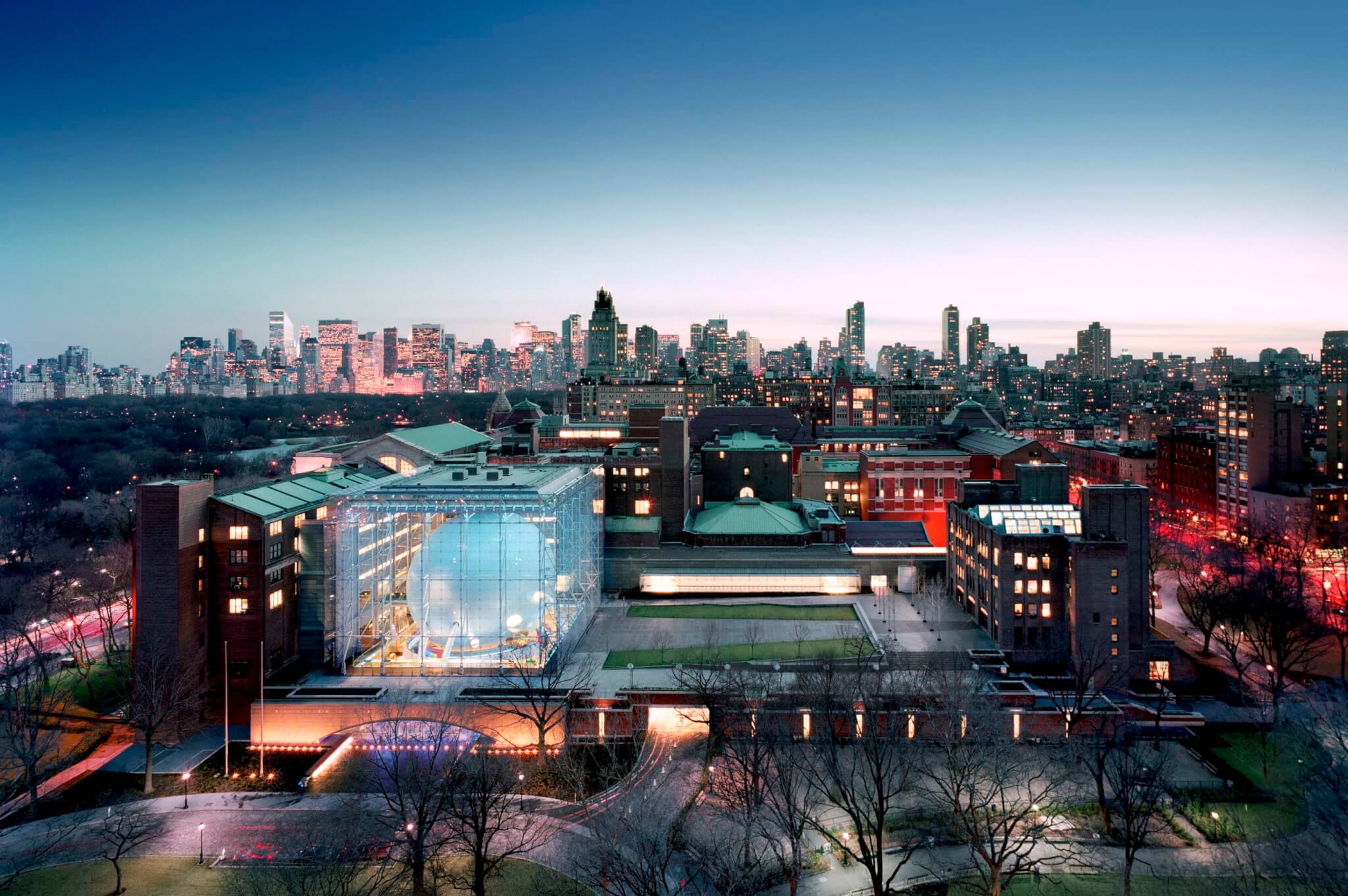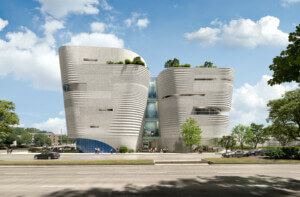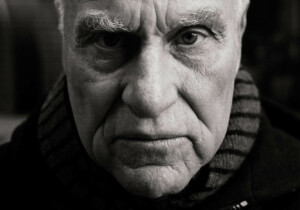In November 1979, a classmate from Cornell who was working for Marcel Breuer & Associates asked if I wanted to work on a design competition for a joint venture of Breuer and James Stewart Polshek and Associates. I knew Breuer’s work quite well but had never heard of Jim. I may have seen him from across the studio once during the competition. As we wrapped up the design, it occurred to me that I needed a real job. Leaving work one evening, I spotted Jim on the street corner, approached, and asked for work. I started the next week at his office on the top floor of 19 Union Square West. I was one of seven. I soon learned who Jim was. There is a line in the poem “Desiderata” by Max Ehrmann that goes: “always there will be greater and lesser persons than yourself.” Implied in that statement are a practical humility and a broad inevitability that have always reminded me of Jim Polshek.
Jim was educated at a time of great optimism, when architects believed they could change the world with their architecture—for the better. Jim never lost his optimism, but as time passed, realities intervened that called into question whether this was possible with architecture alone. Perhaps paradoxically, he saw architecture as both a powerful and a humble means to touch the world. Never losing the social conscience behind that ambition, he recognized the new realities and refined his approach. Jim was an energetic maker. With his special brand of practicality, he was determined to overcome these limitations and ensure an ethical permanence. He would create momentum, designing one building at a time, one neighborhood at a time, one architectural practice at a time, and one architecture school at a time. He led by example. Architecture became a public platform from which he could enlist others in his socially responsible agenda well beyond the limitations of bricks, concrete, glass, steel, and trending styles of the ever-changing architectural landscape.
Characterizations of architects abound. They range from the ego driven, cost-is-no-object, impractical, passionate dreamer to the sensitive, soft-spoken, professorial soothsayer. What they share is the idea of the architect as visionary, a lone creative artist, a singular individual who transforms our desires or social mission miraculously and mysteriously into a building with a signature style. While Jim may have been many of those things, he never saw himself as a lone practitioner bending architecture to his stylistic will. He insisted that “style is circumstantial.” This statement speaks to whom he was. Architecture was not a commodity: It was an inclusive social pursuit involving many for the purpose of serving many.

Jim was the consummate dean. He built networks of creative and impactful people at Columbia’s GSAPP, at his architectural practice, with his professional colleagues, and with not-for-profit organizations. He often said, “I am the mouth, they are the hand.” Jim’s insightful and unexpected sense of humor and persuasive language coupled with his genuine warmth and charm were as legendary as his work.
In my early years in the firm, Jim split his time between the deanship at Columbia and the office. We saw him only early in the morning or late at night. All of us learned very quickly that if we left an inarticulate exploratory design sketch on our desk in the evening, the next morning we would find an articulate note informing us in no uncertain terms of what Jim thought. We did not always agree on how to get there, but we shared a singular common goal. There is a parable about the hedgehog and the fox: “A fox knows many things, but a hedgehog knows one big thing.” I think Jim was a hedgehog disguised as a fox. He knew that, if nothing else, architecture must have positive social impact.
Many of us were Cornell graduates or influenced by Cornell pedagogies, which steeped us in Renaissance humanism, architectural history, contextual analysis, and the politics of design. Our predilections merged extremely well with Jim’s passion for design as a socially responsible act. It was a powerful collaboration. Jim had the self-confidence and foresight to understand the benefits and reach that a collaborative design approach could provide, allowing others to conceptualize and develop commissions independently as the practice grew. He intentionally designed the office to endure after he retired, leaving an inspirational gift to those who followed.

Many architects passed through the office. Some established their own practices; others went to work for other architects; some became professors of architecture, museum curators, campus architects, architectural critics, social workers, model makers, chefs, or entrepreneurs. What they seem to remember most was the culture of the Polshek office. It was a direct reflection of how Jim thought the world should be. Even those who chose to leave the field carry its imprint as a model for their current profession. For those who presently work in the firm, it is the reason they are here.
One last story. Although office policy strictly forbade independent work, in 1983 Richard Olcott, a fellow design partner at Ennead Architects, and I secretly designed a house for a private client. The New York Times Magazine decided to publish it upon completion. Just before the feature went to print, Richard and I sat in Jim’s office and sheepishly told him about it. Jim’s response: “Your success is my success … and vice versa.” That’s who he was.
Jim was not interested in making architecture that was exclusively artful or overly intellectualized or begged for recognition. His true interest was to profoundly affect people through their personal experiences, to awaken their communal values, and to touch their hearts with his generous spirit. His warm regard for others and the lasting and reflexive impact of his work and the office’s signature culture were—and are—contagious. His legacy truly transcends time.
Todd Schliemann is a design partner in Ennead Architects.











